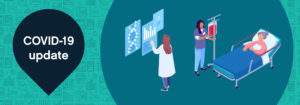The healthcare industry has been in a constant state of flux. From the rise in connected health devices to the transition from fee-for-service to value-based care. The solution to understanding and achieving these rising trends is through big data and analytics. Our predictive analytics scientist, Virginia Long recently contributed to and was featured in two leading healthcare IT publications about the potential of big data and analytics.
Within the Becker’s Health IT & CIO piece, Virginia offered best practices that healthcare organizations can follow to make the most of their resources. Here are a few key takeaways:
“To ensure a successful transition and properly address roadblocks, healthcare organizations must establish a defined data repository and platform to properly store, view and manipulate information. Once the proper platforms are in place, mechanisms and tools need to be utilized, like analytics, to benchmark and track organizational progress. Although costly and time consuming, this is the building block that is fundamental to creating a data-driven approach to healthcare.”
The Healthcare IT News piece, penned by Mike Miliard, took the concept of analytics a step further by highlighting the insights derived from analytics to identify gaps in care, social determinants, etc. Here are a few key takeaways from his piece:
“One of Long’s current focuses is on using geospatial information to find gaps in access to care. For instance, she examined childhood obesity in Mississippi, mapping where there were rural health clinical by county, even by ZIP code. And one ZIP code had a tremendously high rate.
‘You can imagine that if you took that information and added a clinic or state program there it would be super valuable,’ Long explained. ‘You might be able to make some big changes with just a small addition.’
Another of Long’s recent focuses at MedeAnalytics is the addition of geospatial information to help add ‘another layer of understanding to data. ‘Knowing where a person is gives you a lot more relevant information to help you know what’s going on with the patient,’ she said. ‘Not just their health outcomes, but what the drivers are for those health outcomes.’”
To learn more, check out the entire articles at Becker’s Health IT & CIO Review piece and Healthcare IT News piece.
Get our take on industry trends
Data visualization: A picture is worth a thousand…healthcare data points?
The amount of data produced daily has grown exponentially with nearly 90% of the world’s data generated in the last two years alone. To ensure we can make sense of this data, analysts must find meaningful ways to present the information to their audiences.
Read on...How did we get here? Hospital analytics and the new normal
I have heard the word “unprecedented” so many times in 2020 that it has lost its significance; many of us have become desensitized to the extraordinary changes in the world this year.
Read on...How to help employer groups plan in a time of uncertainty
Employers and their sponsored health plans are thinking about next year’s benefit designs with a significant challenge not seen before: the effect of the coronavirus pandemic. There are important considerations to take into account before making any decisions about new or existing coverage. Becky Niehus, a director of Product Consulting at MedeAnalytics, explores these new issues and what employers can do to ensure employees are “covered.”
Read on...Healthcare’s return to “normal” after COVID-19: Is it possible?
As providers determine how to get patients to return to facilities for routine disease management and preventive screenings, opportunities are ripe for the application of analytics to triage at the right time to the right setting. Data related to COVID-19 will continue to flow rapidly, but there are possibly more questions than answers now about a return to “normal.”
Read on...


